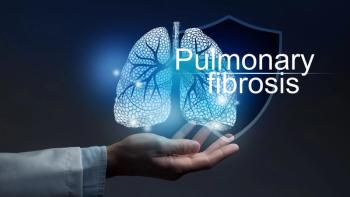
“Cures” Debate Far From Over
The House Energy Committee’s approval of the 21st Century Cures legislation is only a first step, with critics and collaborators alike lining up to comment.
Although the US House of Representatives Energy & Commerce (E&C) Committee unanimously approved the 21st Century Cures legislation last week, the debate is slated to continue for several months, if not longer. Members of Congress are expected to propose numerous amendments and revisions when the measure is up for a vote by the full House, which is expected in late June or July. Meanwhile, the Senate appears in no hurry to move forward with a similar bill; leaders of the Senate Health, Education, Labor & Pensions (HELP) Committee are talking about considering a proposal this fall, but that could be delayed further.
Critics of pharma companies, moreover, are broadcasting opposition to aspects of the legislation that they claim would expose patients to untested and unsafe therapies. Public Citizen’s Health Research Group has protested provisions to accelerate FDA approval of innovative medical devices and expand exclusivity for certain new indications. And it criticizes sections of the bill designed to speed development of much-needed antibiotics, a stance that flies in the face of the broader public health and medical community, which strongly supports an abbreviated development pathway for innovative anti-bacterial and anti-fungal treatments.
Public Citizen and AARP also find troubling provisions that make it easier for pharma companies to distribute textbooks and medical journal articles to doctors and to support continuing medical education by exempting disclosure of the value of such items from the Physician Payment Sunshine Act. John Kamp of the Coalition for Healthcare Communication praised those measures as particularly important to marketers, as are sections of the Cures Act that authorize pharma companies to provide economic information to payers and direct FDA to clarify its policy on off-label marketing.
Just how Congress will offset the cost of the legislation remains contentious. E&C Chairman Fred Upton (R-Mich) won Democratic support for the bill by authorizing a hefty $2.5 billion a year increase for National Institutes of Health, and at the last moment added in $110 million a year for five years for FDA. That’s about half of what FDA estimates it will cost to implement all the mandates and requirements of the legislation, but an extra $550 million is “substantial and truly welcome,” according to the Alliance for a Stronger FDA. Pharma companies are particularly pleased with a late change that would block FDA user fees from automatic budget sequestration.
Upton proposes to offset these costs by tapping into revenues from the Strategic Petroleum Reserve, limiting Medicaid payments for durable medical equipment, and altering reinsurance payments for Medicare Part D drug plans. Insurers and pharmacy benefit managers are protesting that last move, which would hurt insurers that sponsor drug plans and ironically have been some of the harshest critics of rising drug prices. The Pharmaceutical Care Management Association (PCMA) complained that cutting billions from Part D plans would “have the unintended consequence of making it harder for beneficiaries to access the very medicines that 21st Century Cures seeks to advance.”
Pharma companies would liked to have had more provisions extending product exclusivity, but generally offered high praise for the Committee’s action. Industry succeeded in sidelining earlier moves to include language permitting government negotiation of drug prices, while the Sunshine and economic information provisions came in.
If the Senate continues to move slowly, a final bill may not near the finish line until next year. If that’s too late for Congress to agree on the legislation before the 2016 elections, the FDA-related provisions may end up incorporated into user-fee renewal legislation in 2017.
Newsletter
Get the essential updates shaping the future of pharma manufacturing and compliance—subscribe today to Pharmaceutical Technology and never miss a breakthrough.





